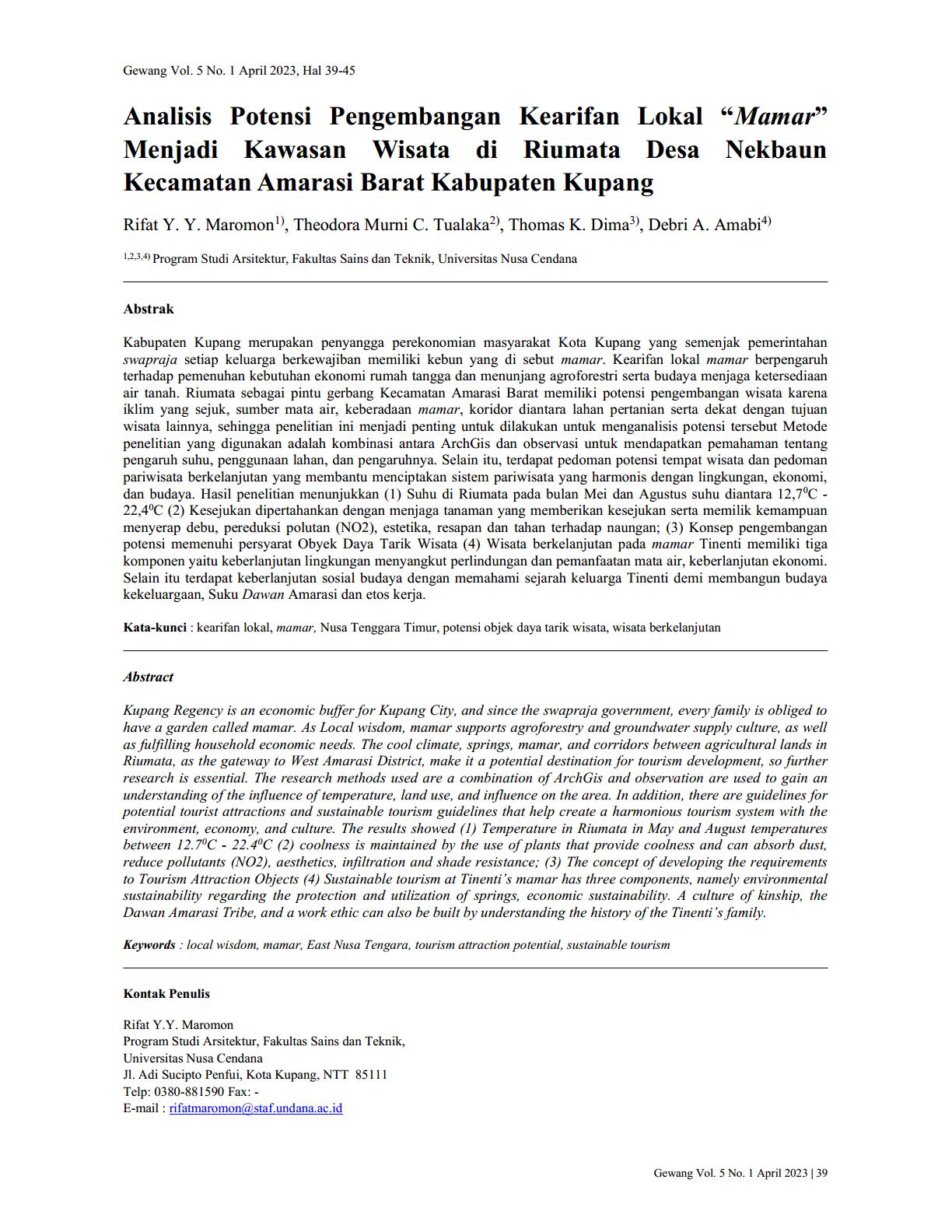Analisis Potensi Pengembangan Kearifan Lokal “Mamar” Menjadi Kawasan Wisata di Riumata Desa Nekbaun Kecamatan Amarasi Barat Kabupaten Kupang
Main Article Content
Abstract
Kupang Regency is an economic buffer for Kupang City, and since the swapraja government, every family is obliged to have a garden called mamar. As Local wisdom, mamar supports agroforestry and groundwater supply culture, as well as fulfilling household economic needs. The cool climate, springs, mamar, and corridors between agricultural lands in Riumata, as the gateway to West Amarasi District, make it a potential destination for tourism development, so further research is essential. The research methods used are a combination of ArchGis and observation are used to gain an understanding of the influence of temperature, land use, and influence on the area. In addition, there are guidelines for potential tourist attractions and sustainable tourism guidelines that help create a harmonious tourism system with the environment, economy, and culture. The results showed (1) Temperature in Riumata in May and August temperatures between 12.70C - 22.40C (2) coolness is maintained by the use of plants that provide coolness and can absorb dust, reduce pollutants (NO2), aesthetics, infiltration and shade resistance; (3) The concept of developing the requirements to Tourism Attraction Objects (4) Sustainable tourism at Tinenti’s mamar has three components, namely environmental sustainability regarding the protection and utilization of springs, economic sustainability. A culture of kinship, the Dawan Amarasi Tribe, and a work ethic can also be built by understanding the history of the Tinenti’s family.
Downloads
Article Details
This license enables reusers to distribute, remix, adapt, and build upon the material in any medium or format, so long as attribution is given to the creator. The license allows for commercial use

